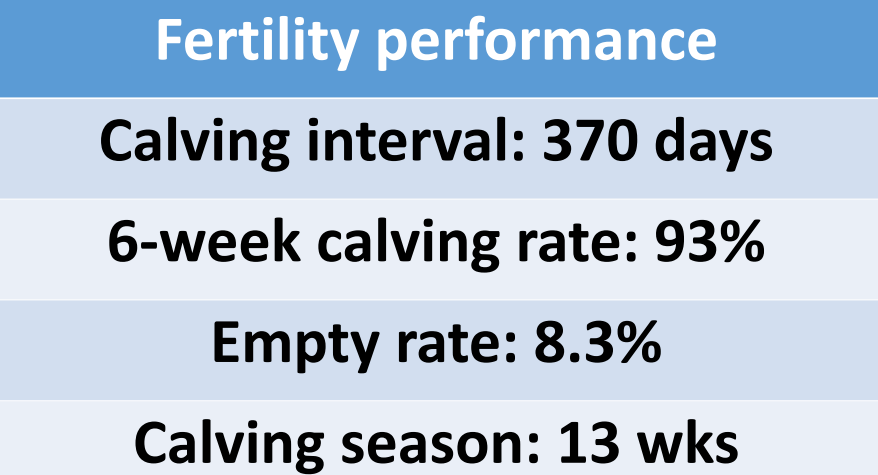Located in Bandon, Co. Cork, Shinagh Dairy Farm was established in 2011 in a farming venture between the four west Cork co-ops – Bandon, Barryroe, Drinagh and Lisavaird – in conjunction with Carbery and Teagasc.
The farm consists of 78ha – in one block – which is leased by Shinagh Dairy Farm from Shinagh Estates Ltd.
Almost nine years into a 15-year lease the farm is currently milking 232 spring-calving cross-bred cows.
Teagasc’s Padraig French spoke, at the Shinagh Dairy Farm’s recent open day (November 13), about the establishment of the farm.
Initially, €820,000 was spent on converting the farm to dairy and the objectives were to ensure adequate cash-flow to give a return on investment, he said.
This investment included the purchasing of in-calf dairy heifers, inserting a milking parlour, converting existing housing, constructing roadways and reseeding, he explained.
“Over the last seven years – 2011 to 2017 – the farm has accumulated €530,000 worth of cash” as a result of high performance and strong milk prices during that period, he noted. This equates to a 11% return on capital investment and 35% return on equity investment.
Environmental sustainability
Going forward, a much broader objective has been set for the farm which will govern how it is operated over the coming years.
Padraig explained there will still be a focus on making a profit to ensure economic sustainability, but greater emphasis will be put on making the farm environmentally sustainable.
He noted that climate change as a result of farming – dairy farming in particular – is an issue and has the potential to negatively affect markets for Irish dairy products.
To combat this, he discussed how new technologies – which have previously been identified by research – will be adapted on the farm.
These technologies will help reduce the negative impact of dairy farming on climate change without being an additional cost to the production system, he noted.
In addition, he explained that dairy expansion has a bad image in terms of the environment and animal welfare. “We must protect our social licence to produce milk to ensure that expansion in dairy is a good thing,” he said.
Labour sustainability
Padraig also said that the next limitation to dairy expansion will be people. Dairy farms must be an attractive place to work, with competitive pay in order to ensure labour sustainability, he explained.
Kevin Ahern, the farm manager, is the only full-time employee on the farm and is responsible for the running of the operation in addition to carrying out the tasks of milking and calf rearing.
Students from agricultural colleges across the country and part-time relief staff help share the workload throughout the year.
Spring is naturally busy with many tasks occurring simultaneously. Kevin explained that at peak they calve 40 cows in 36 hours and on average calve nine cows each day from February 8.
To ease the workload, Kevin has opted to implement once-a-day milking until March 1. In addition, 55 replacement heifers are contract reared off the farm, while the remaining calves are sold at two-weeks-old.
All replacement heifers leave the farm on May 1 – weaned. Kevin explained that it is very difficult to find a contract rearer that will take calves less than two-weeks-old and rear them.
Ideally the replacement heifer calves would leave the farm as soon as possible which would reduce the spring workload further, he noted.
Another strategy implemented on the farm to reduce the labour input is that all machinery work is done by an agricultural contractor. This includes fertiliser and slurry spreading in addition to the complete silage harvesting operation.
When the cows are housed, the contractor comes “every second or third day to feed the silage”. “We just push it into the cows the days the contractor isn’t here,” Kevin said.
Farm performance
The grass-based cross-bred herd has a calving interval of 370 days and an impressive six-week calving rate of 93%.
Previously, huge emphasis was put on having a high percentage of the herd in calf by the end of the first six weeks of the breeding season, Kevin explained. This was driven by keeping the herd young with a high replacement, he noted.
With a stocking rate of 3.21LU/ha (livestock units per hectare) the milk solids output achieved so far this year was 1,320kg/ha. This equates to a total farm output of 96,500kg and an average of 407kg/cow.
Also speaking at the event, Teagasc’s John McNamara said that the herd has relatively low milk solids – for cross-bred animals – due to the high replacement rate.
Going forward the plan is to have a lower replacement rate which should bring up the milk solids / cow as the herd matures, he said.
Like many other dairy holdings across the country the Shinagh Dairy Farm experienced reduced grass growth due to the drought conditions during the summer.
However, an impressive 10,970kg of grass/ha (dry matter) was grown this year. Unfortunately, due to the high stocking rate, this was insufficient to meet herd feed demands.
Therefore, to fill the gap considerably more concentrate was introduced as a supplement to grass silage and grazed grass. On a typical year the herd would receive 300kg of concentrate/head/year, but this year that increased to 1,300kg of concentrate/head/year.







